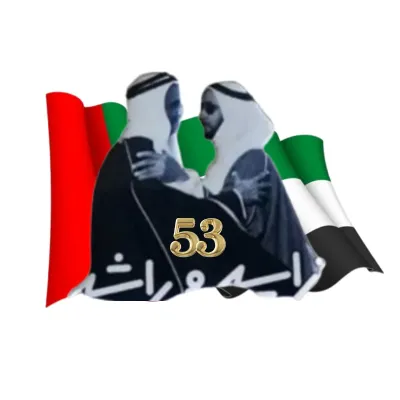Meaning of Colors of Guinea Flag
What is the Meaning of Colors of Guinea Flag?
The flag of Guinea, adopted on November 10, 1958, shortly before the country gained independence from France, is a powerful symbol of the nation's identity, aspirations, and history. Comprising three vertical stripes of red, yellow, and green, it encapsulates the values, struggles, and hopes of the Guinean people. This article explores the meanings behind the colors of the Guinean flag, delving into historical, cultural, and political contexts to provide a comprehensive understanding of this national emblem
.
Historical Background
Guinea, located on the west coast of Africa, has a rich history that predates colonial times, with powerful kingdoms and empires that traded with Europeans in the fifteenth century. The flag's colors are deeply rooted in the Pan-African movement, which sought to unify African nations and peoples and to free the continent from colonial rule. These colors were inspired by the Ethiopian flag, one of the oldest independent African countries, which successfully resisted colonial domination. The adoption of the Guinean flag was a declaration of independence, a rejection of colonialism, and an assertion of national identity and sovereignty.
Meaning of Colors of Flag
The Red Stripe
The red stripe on the flag symbolizes the blood of martyrs who died fighting for Guinea's independence and freedom. This color represents the sacrifice and courage of those who struggled against colonial oppression. It is a reminder of the cost of liberty and the enduring spirit of those who laid down their lives for the nation's future. Red also stands for the solidarity among the people, emphasizing the strength and passion that bind Guineans together in their quest for justice and equality.
The Yellow Stripe
Yellow, occupying the central position on the flag, symbolizes the sun and the country's wealth. The sun is a universal symbol of life, warmth, and growth, reflecting Guinea's tropical climate and the optimism and hope of its people for a bright future. This color also represents the country's natural riches, particularly its vast mineral resources, including bauxite, gold, and diamonds, which are central to Guinea's economy. Yellow signifies the potential for prosperity and development, highlighting the importance of harnessing these resources for the benefit of all Guineans.
The Green Stripe
The green stripe symbolizes the agriculture and natural beauty of the country. It represents the fertile land of Guinea, which is a vital source of livelihood for the majority of its population. Agriculture is a cornerstone of the nation's economy, with the sector providing employment and sustenance for a significant portion of the population. Green reflects the hope for progress and growth, as well as the commitment to environmental preservation and sustainability. It embodies the aspiration towards self-sufficiency and the importance of living in harmony with nature.
Political and Cultural Significance
The colors of the Guinea flag are imbued with political and cultural significance, serving as a constant reminder of the country's journey towards independence and its ongoing quest for unity, justice, and prosperity. The flag is a source of pride and identity for Guineans, symbolizing their resilience, diversity, and unity. It is prominently displayed during national celebrations, such as Independence Day, and at international events, where it represents the sovereignty and dignity of the Guinean nation.
History
The history of the Guinea flag is a testament to the country's struggle for independence, its identity, and its aspirations in the post-colonial era. The flag, consisting of three vertical stripes of red, yellow, and green, was officially adopted on November 10, 1958, shortly before Guinea declared its independence from France on October 2, 1959. This adoption marked a significant moment in Guinea's history, symbolizing a break from colonial rule and the beginning of a new chapter as a sovereign nation.
Post-Independence Evolution
Since its adoption, the Guinea flag has been a central national symbol, representing the country's sovereignty and the ideals of its people. It has flown through periods of change, including political upheavals, economic challenges, and social transformations. Despite these changes, the flag's core symbolism remains a source of pride and unity for Guineans.
Throughout its history, the flag has been a rallying point for the nation, displayed prominently at governmental buildings, public events, and in international forums. It embodies the spirit of independence, the richness of Guinea's natural and human resources, and the aspirations of its people for a better future.
Conclusion
The flag of Guinea, with its vibrant red, yellow, and green stripes, is a powerful emblem of the nation's identity, history, and aspirations. Each color carries deep meanings, reflecting the struggles and achievements of the Guinean people, their rich cultural heritage, and their hopes for a prosperous future. As Guinea continues to navigate the challenges of the 21st century, the flag remains a unifying symbol, inspiring solidarity, patriotism, and a collective commitment to the values it represents. Through its colors, the flag tells the story of Guinea, a nation proud of its past and optimistic about its future.
Spotlight on Trending Promo Gear
Browse the most popular and trending Corporate Gifts
Promotional Sports Water Bottles
Promotional Sports Water Bottles
Promotional Sports Water Bottles
Back To School Gifts
Promotional Sports Water Bottles
Promotional Sports Water Bottles
Promotional Sports Water Bottles
Eco Friendly Bottles
Promotional Sports Water Bottles




















